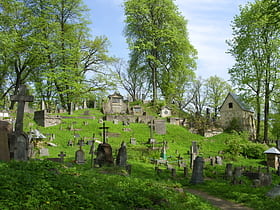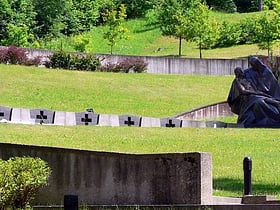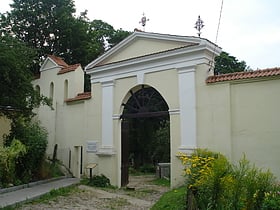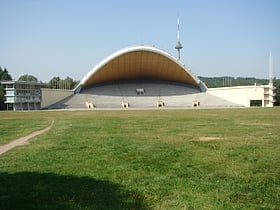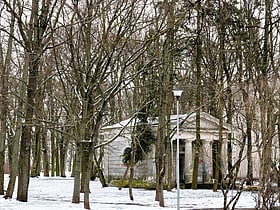Vilnius: Cemetery
Places and attractions in the Cemetery category
Categories
- Church
- Museum
- Palace
- Baroque architecture
- Park
- Sacred and religious sites
- Cemetery
- Street
- Neighbourhood
- Art museum
- Theater
- History museum
- Gothic architecture
- Bridge
- Specialty museum
- Forts and castles
- Architecture
- Historical place
- Shopping
- Concerts and shows
- Manor house
- Art gallery
- Sport
- Sport venue
Rasos Cemetery
Rasos Cemetery, often referred to as the heart of Lithuania's capital, Vilnius, is an enduring testament to the nation's history and cultural tapestry. Established in the late 18th century, it is one of the oldest and most significant cemeteries in the city.
Antakalnis Cemetery
Antakalnis Cemetery, sometimes referred as Antakalnis Military Cemetery, is an active cemetery in the Antakalnis district of Vilnius, Lithuania. It was established in 1809.
Bernardine Cemetery
The Bernardine Cemetery, is one of the three oldest cemeteries in Vilnius, Lithuania. It covers about 38,000 square metres and has an estimated 14,000 burial sites. It was established in 1810 by the Bernardine monks of the Church of St.
Vingis Park
Forested riverside park with cafes Vingis Park is the largest park in Vilnius, Lithuania. Located in a curve of the Neris River, it covers 162 hectares. A pedestrian bridge connects the park with Žvėrynas.
Evangelical Cemetery
The Protestant Cemetery in Vilnius, Lithuania, was established in the early 19th century. As the city grew, there was a need to move the old Lutheran cemetery outside the city walls.
Jewish cemeteries of Vilnius
The Jewish cemeteries of Vinius are the three Jewish cemeteries of the Lithuanian Jews living in what is today Vilnius, the capital of Lithuania, which was known to them for centuries as Vilna, the principal city of the Grand Duchy of Lithuania and the Pale of Settlement of the Russian Empire.
Liepkalnio stačiatikių kapinės
Orthodox cemetery in Vilnius - a historic cemetery located on Lipówka in Vilnius. The cemetery is located between the streets of Liepkalnio, Dzūkų and Tyzenhauzų. It was established in 1796, when after the Third partition of the Polish -Lithuanian Commonwealth, the authorities of the Lithuanian Governorate separated the area for its construction. The first burials at the cemetery took place in 1815.
Map

